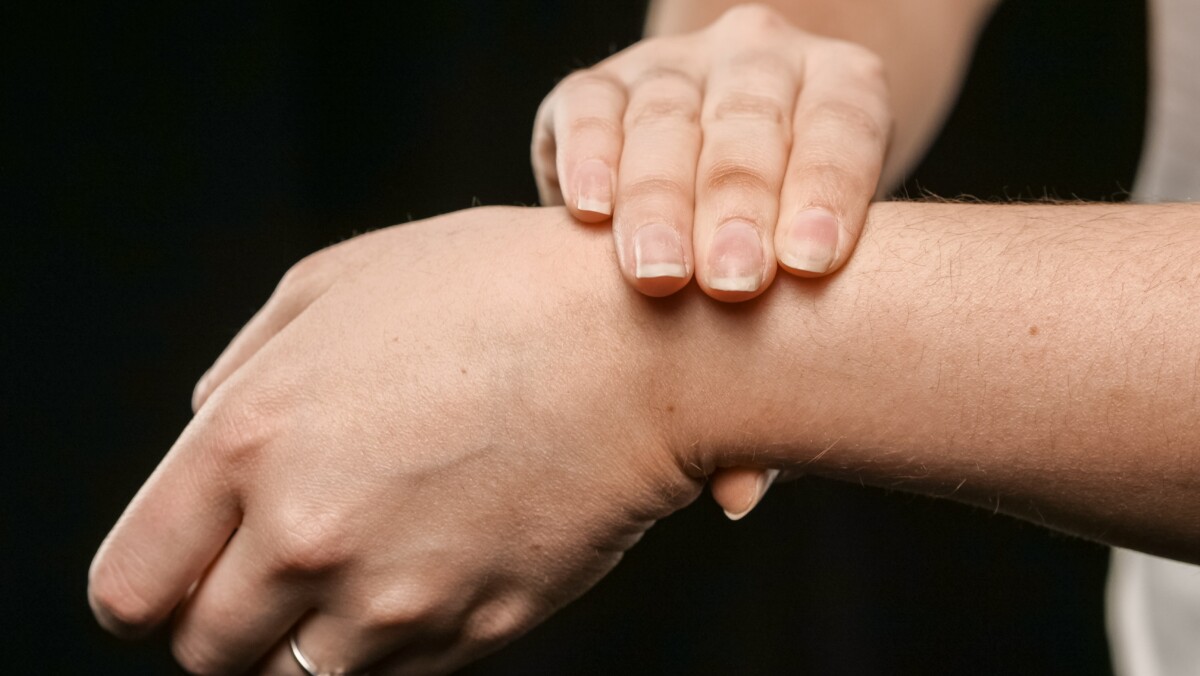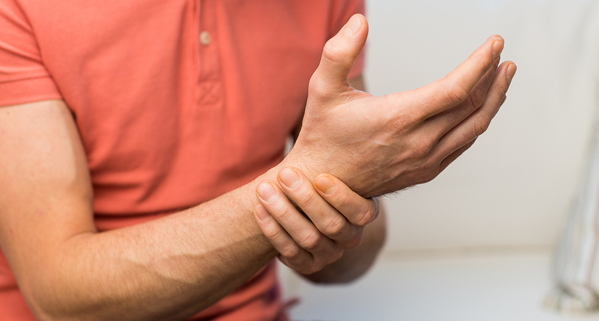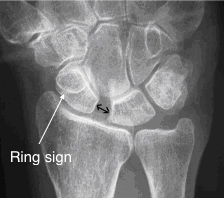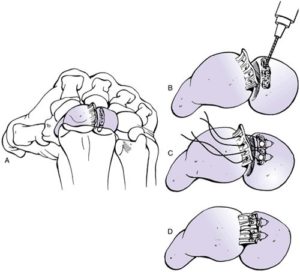The wrist is a complex joint, comprised of the radius, ulna, and eight carpal bones: the Scaphoid, Lunate, Triquetrum, Pisiform, Trapezium, Trapezoid, Capitate, and Hamate. Each bone is connected to another by ligaments; fibrous connective tissue responsible for maintaining the structural integrity of the joint.
Due to the nature of the wrist allowing a wide range of motion, it is more susceptible to injuries with the ligaments in particular. Of all the ligament and wrist injuries, the scapholunate ligament, connecting the Scaphoid to the Lunate, is the most commonly injured. This ligament is integral to wrist stability, so when damaged, it is vital for function to be restored.
This blog will provide insight into the causes, symptoms, diagnosis, and treatment of a scapholunate ligament tear, and the treatment options available to you.
Causes of Scapholunate Ligament Tears
The most prevalent cause of a scapholunate ligament tear is falling onto an outstretched hand. This injury occurs when the wrist is forcefully bent backward or positioned unusually. Moreover, it can gradually develop over time due to repetitive sprains or the effects of ageing.
During a scapholunate ligament sprain, the scaphoid bone experiences forward bending, while the lunate bone bends backward. Consequently, a gap forms, leading to the eventual tearing of the ligament. This type of injury can be common across sports and daily activities. It encompasses a range of severity levels, from partial tears (predynamic/dynamic) to complete ruptures (static/scapholunate advanced collapse or SLAC). Furthermore, a scapholunate ligament tear can be categorised based on the time since the injury occurred: Acute (within 4 weeks), subacute (between 4 weeks and 6 months), and chronic (more than 6 months).
Signs and Symptoms of Scapholunate Ligament Tears
Scapholunate ligament injuries are often painful and swollen. Acute injuries will come with wrist pain, stiffness, swelling, ‘clunking’, and loss of grip strength. On the other hand, chronic injuries will experience weakness, clunking, pain after use, and background pain (from secondary arthritis).
Diagnosing a Scapholunate Ligament Tear
If you have recently had a fall, used your hand to cushion yourself, and are now experiencing pain/tenderness in the centre/thumb side of your wrist, you may have damaged your scapholunate ligament. Your wrist movements may be restricted, stiff, and painful.
The Kirk-Watson test is helpful in diagnosing a ligament tear. Your clinician will attempt to reproduce your pain with movement and feeling for the scaphoid bone. Confirmation of the scapholunate ligament damage will be felt through a ‘clunk’ of the bone or possibly even heard upon shifting of the wrist.
Investigations
Upon discovery of a possible scapholunate ligament sprain, further investigations may be needed to confirm the extent of your injury. An X-ray will be able to rule out a bone fracture, and show how wide the gap is between the scaphoid and lunate, indicating the severity of the tear/stretch. An MRI can also help indicate a ligament tear and/or swelling. This MRI works by injecting dye into the wrist; a tear/hole will let this dye leak through, further indicating damage to the ligament. MRI must be approached with caution however due to possible inaccuracies.
If the diagnosis is still not 100% clear, wrist arthroscopy could be used to define the injury. This method involves assessing the inside of the wrist with a camera via surgery.
Treatment Options for a Scapholunate Ligament Tear
Scapholunate ligaments won’t heal independently, and if left untreated can lead to wrist arthritis. The type of treatment you receive will vary upon the severity of injury, and the length of time since you sustained the injury.
Partial Ligament Tears
Partial tears of a scapholunate ligament injury may require the use of a splint or cast to immobilise the joint for 4-6 weeks. The aim here is to prevent pain through minimising activity around the wrist. Hand therapy and analgesics may also be helpful for wrist stiffness once the cast is removed. The overall recovery process may take up to 18 months.
Acute Full Ligament Rupture
In cases where the ligament has recently undergone a full rupture, surgery is often the best treatment method. Small bone anchors and wires are inserted into both bones to hold them together. Coupled with a plaster cast, the joint is immobilised for 8 weeks. Once healed, the wires are removed and hand therapy and analgesia are applied to allow normal wrist movement again.
Chronic Full Ligament Rupture
When a chronic, full rupture is discovered, ligament reconstruction is best recommended. The surgery takes a portion of a wrist tendon, used for replacing the torn ligament. Along with wires again, the lunate and scaphoid are held together, with a plastic cast for immobilisation, for 8 weeks until the wires are removed and hand therapy can begin.
Chronic Full Ligament Rupture with Arthritis
Finally, where the scapholunate ligament underwent a full rupture more than 8 weeks ago but arthritis has started to settle in, ligament reconstruction is no longer possible and so arthritis treatment is recommended, with the aim of reducing pain and maintaining movement capabilities.
Aftercare for a torn Scapholunate Ligament
Upon completion of treatment, whether surgical or non-surgical, regular follow-ups with a hand therapist should be considered to increase movement, strength, and stability.
Returning to work should only be considered 2-3 weeks after treatment for office workers, and at least 12 weeks for those involved in heavy manual activities. Driving is also not allowed up to 12 weeks from surgery.
As with all surgeries, there are risks involved that should be considered beforehand:
- Risk of infection or injury to nerves, blood vessels, and tendons
- Scar sensitivity
- Recurrence of injury
- Failure to resolve symptoms
- Further surgery, if recurrence occurs
- Reduced grip strength
- Reduced range of movement in your wrist
- Chronic Pain Syndrome (CPS) – lifelong permanent pain and stiffness due to adverse reactions following surgery
If you or anyone you know has potentially injured your/their scapholunate ligament, it is vital to get it checked by a hand and wrist specialist or healthcare professional. This injury, if left untreated, can cause serious implications to your future health, with the risk of developing arthritis. To speak with one of our professionals, send us a message, and book your appointment today to start the road to recovery.




